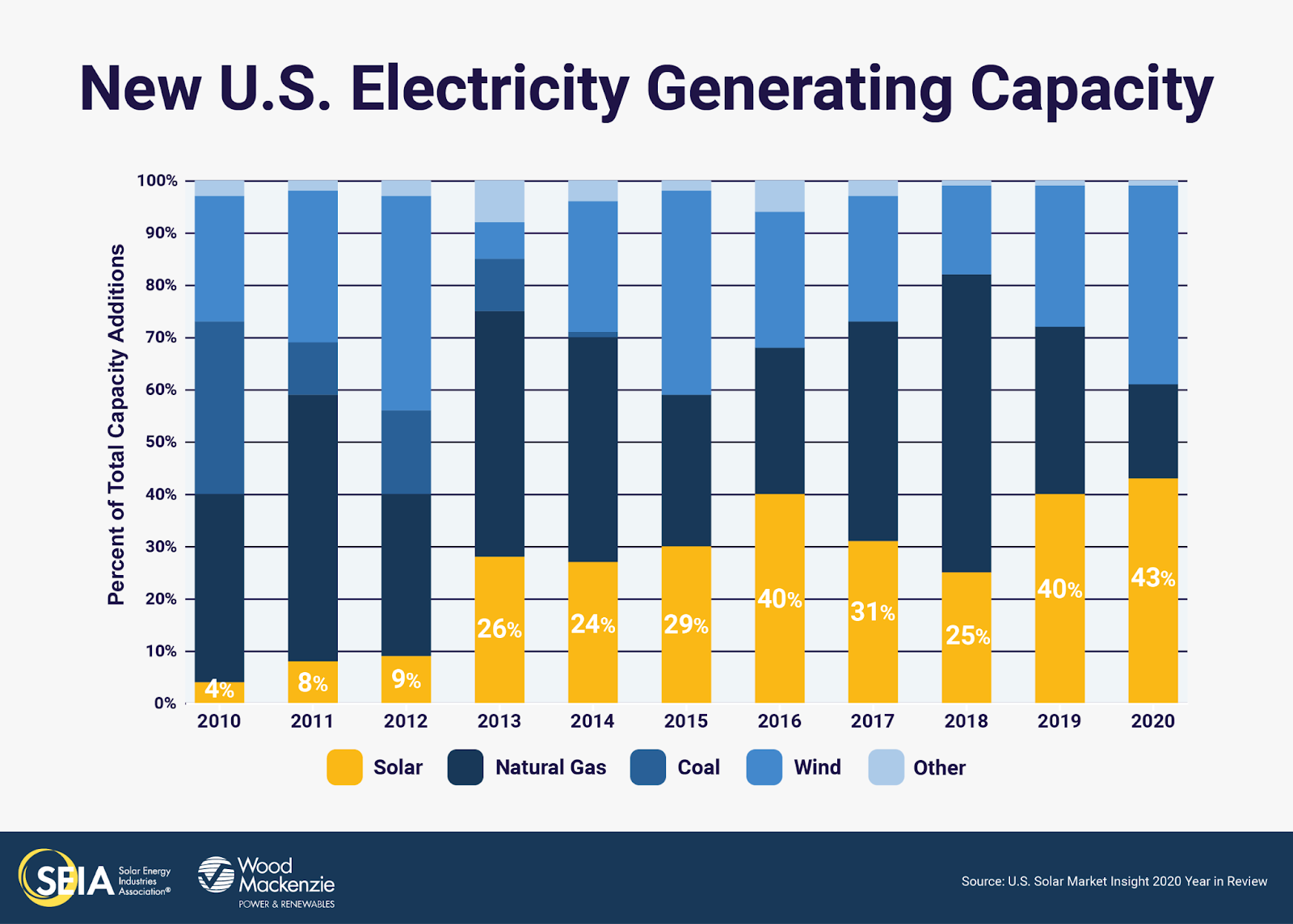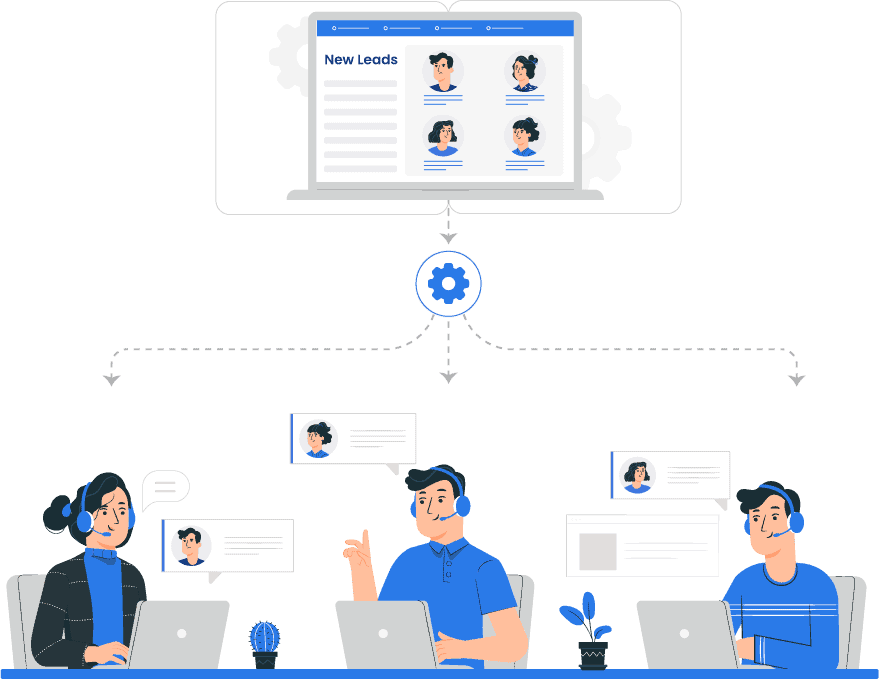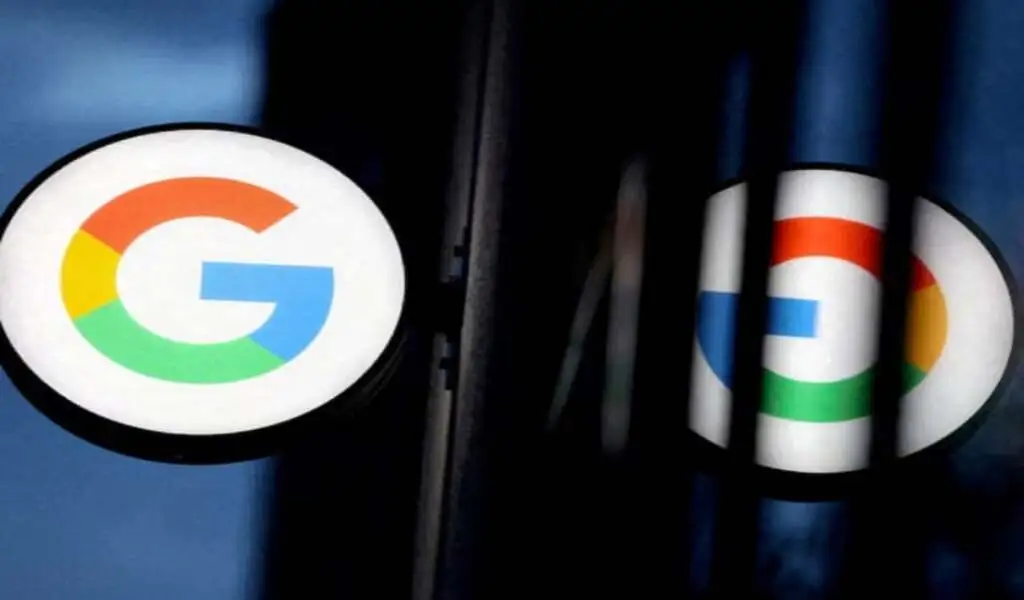Tech
Call Tracking and Best Software for Solar Lead Generation
Top-notch call tracking and technologies boost solar lead production. Discover the benefits, analytics, and best practices of the dynamic solar energy business.
Solar Energy Lead Generation: A Deep Dive into Call Tracking Solutions
Lead generation is a critical factor for business growth in the dynamic solar energy sector. Full utilization of call monitoring software has the potential to transform a given circumstance.
Call tracking services function by providing targeted advertising campaigns with specific phone numbers. Call monitoring solutions provide comprehensive call analytics, enabling organizations to ascertain the most profitable marketing initiatives.
The market for solar products is anticipated to reach $223.3 billion by 2026, expanding at a compound annual growth rate (CAGR) of 20.5% between 2019 and 2026. With the growth of the market, there is increased competition among the leading solar companies.
Attaining the attention of prospective customers becomes critical. Solar energy, being a pure and renewable resource, has the potential to decrease electricity expenses by 70–100%, rendering it an appealing option for consumers.
Nevertheless, the task of efficiently conveying these advantages to prospective clients is formidable. An application for call tracking can bridge this divide.
Apps for call monitoring offer businesses valuable insights into consumer behavior, enabling them to optimize the effectiveness of their marketing strategies. The top call tracking tools can boost conversion rates by as much as 40%, according to an analysis of them.
This article will examine in greater detail how contact tracking solutions can facilitate lead generation in the solar energy industry.
Overview of Solar Energy and its Importance
By harnessing solar radiation for electrical generation, solar energy is classified as a renewable energy source. Contributing to the battle against climate change, solar energy reduces greenhouse gas emissions. It is a pure and environmentally friendly alternative to conventional fossil fuels. Solar energy is gaining increasing popularity. Indeed, solar panel installations in the United States are proliferating at an alarming rate.

Source: seia.org
Why Attract Potential Customers to Solar Energy?
To understand the importance of attracting potential customers to solar energy, it is necessary to delve into the facts and figures associated with the industry. Here are some key statistics and reasons highlighting the importance of promoting solar energy, especially for solar companies in Florida:
- Advantages for the Environment: Solar energy is a clean, green energy. Per the SEIA, the generation of one megawatt-hour (MWh) of solar electricity averts the production of over one thousand pounds of carbon dioxide. Increasing the use of solar energy can help cut carbon emissions dramatically.
- Savings: Using solar energy can result in significant cost savings. Monthly power bill reductions of more than $100 may be achieved with residential solar setups. There might be even greater savings for corporations.
- Job Creation: A major source of new jobs is the solar business. The sector has consistently grown throughout the years, employing about 230,000 Americans in 2020.
- Market Growth: The market for solar energy is growing very quickly. A compound annual growth rate (CAGR) of 20.5% is expected to bring the world solar energy market to $223.3 billion by 2026.
- Government Incentives: Various government incentives, such as tax credits and rebates, make solar installations even more appealing. In the United States, the federal solar investment tax credit (ITC) provides a 26% tax credit for residential and commercial solar installations.
Taking into account the above arguments, it is clear that encouraging potential customers to switch to solar energy is beneficial for both people and companies from a financial and environmental point of view.
The Role of Call Tracking in Solar Lead Generation
Now that solar energy has shown to be relevant, it’s crucial to comprehend how call tracking solutions may be quite helpful in producing leads for solar energy businesses, particularly in Florida where there is a significant need for solar solutions.
With the use of technology, call tracking enables enterprises, such as solar energy providers, to track and examine incoming calls. Businesses may make data-driven decisions and enhance their lead generation tactics by utilizing call tracking, which offers insightful information about the success of marketing initiatives. Numerous advantages are available to solar enterprises through select software based on expert advice and reviews, such as call tracking software and call tracking numbers:
- Identifying High-Quality Leads: Monitoring phone conversations helps solar firms find high-quality leads that will turn into customers. Lead quality may be assessed by call length, inquiry type, and other indicators.
- Calculating Marketing Campaign Performance: Call tracking software lets companies assign phone calls to marketing campaigns or channels. Solar firms may efficiently optimize their marketing budget and invest in the most successful initiatives.
- Optimizing Customer Experience: Solar firms may enhance customer experience using call tracking stats. Analyzing call recordings using a call tracking app helps them uncover customer contact issues and improve.
- Competitive Advantage: Solar energy is competitive, so staying ahead is essential. Solar firms may adapt their marketing efforts by tracking calls.
- Enhanced Lead Distribution: Solar firms may send leads more efficiently and effectively with call tracking and the best lead distribution software. Lead distribution and lead bidding software may route calls to the best sales reps, enhancing lead conversion.
The Metrics that Matter
Solar businesses require certain call tracking metrics to generate leads. Metrics help evaluate marketing initiatives and customer behavior. Among the crucial call tracking metrics are the following:
- Call Volume. It is simpler to observe how many people call you at the number you show in particular channels and storefronts when it comes to incoming calls.
- Lead Source. It’s critical to ascertain the source of your calls and how potential clients obtained your number.
- Call Duration. A useful indicator for phone-based advertising efforts and the incoming calls they generate is call duration.
- Day and Time. Time and day are vital, but what’s even more crucial is to develop a marketing strategy that targets people during those periods using the time and day analytics from your incoming calls.
- Conversion Type. Utilize call conversion tags to help your marketing efforts qualify the leads by tracking the sort of conversion for each call even if customers make good use of virtual phone systems.

Source: nimbata.com
The Role of Lead Distribution Software
In order to optimize lead generation for solar energy enterprises, lead distribution software, in conjunction with contact monitoring, is an indispensable instrument. The implementation of an automated system for allocating leads to sales representatives guarantees the precise and expeditious routing of each lead to the most appropriate salesperson.
A utility provided by lead distribution software is lead scoring. Lead scoring enables solar energy companies to rank prospects according to their conversion potential and quality.
In order to foster a competitive environment that motivates sales teams to achieve optimal performance, call tracking systems incorporate tendering software. Sales representatives are able to bid on prospects they wish to pursue using bidding software.

Source: autoresponderz.com
Conclusion
As a result of its environmental and economic advantages, solar energy is, in summary, an expanding sector. Effective lead generation becomes increasingly critical as competition increases. Confrontationally, this is where call tracking solutions come into action.
These tools facilitate the identification of the most lucrative marketing strategies for organizations through the provision of targeted advertising campaigns and comprehensive call analytics.
Organizations can optimize the efficacy of their promotional efforts by utilizing these insights into consumer behavior. Research has shown that the use of leading contact monitoring tools can increase conversion rates by as much as 40%.
In addition, by incorporating lead distribution software, the task of allocating leads can be automated, thereby maximizing resource utilization. Incorporating lead distribution software and call monitoring solutions can thus substantially increase solar energy industry lead generation and conversion rates, thereby fostering business expansion.
SEE ALSO: The Future Of The Internet: What Happens If Google Loses Its Antitrust Battle?

Tech
US: A Judge Mandates that Google Allow Competing App Stores to Access Android

(VOR News) – The ruling is that Google, the greatest technology firm in the world, is required to make its Android smartphone operating system available to merchants that supply applications that are in direct rivalry with Google’s. This decision was reached by a judge in the United States of America.
The Android Play store, which is owned and operated by Google, was found to be an example of an illegal monopoly arrangement by a jury in the state of California on Monday. The finding was reached by a jury. Monday is the day that this decision was come to.
An earlier federal judge ruled Google’s search engine illegal.
This finding, which came after that decision, has forced the company to suffer yet another setback. As a result of the corporation having already encountered its initial obstacle, this decision has been established. This particular decision was made by the judge during the month of August, when the month was in progress.
In light of the fact that the decision was made, what exactly does it mean that the choice was accepted?
In accordance with the verdict, Google is obligated to make it possible for users to download Android app stores that are offered by third-party competitors. For a period of three years, the corporation is prohibited from imposing restrictions on the usage of payment mechanisms that are integrated into the application.
In addition, it is important to keep in mind that Google does not possess the right to impose restrictions on the utilization of ways to make payments online.
Additionally, the verdict makes it unlawful for Google to give money to manufacturers of smartphones in order to preinstall its app store. Smartphone manufacturers are prohibited from doing so.
Furthermore, it prevents Google from the possibility of sharing the revenue that is generated by the Play store with other companies that are in the industry of delivering mobile applications.
In addition to this, the court has mandated the establishment of a technical committee that will be made up of three different people chosen at random.
The committee will be responsible for monitoring the implementation of the reforms and finding solutions to any disagreements that may occur as a consequence of the implementation of the reforms while they are being implemented. This task will fall under the committee’s purview so that it may fulfill its duties.
However, certain components were allowed to be put into action until July 1st, despite the fact that the judge’s statement suggested that the ruling would take effect on November 1st. The statement was the basis for the ruling, which ultimately became effective.
Particularly, I wanted to know what Google’s reaction would be.
There is a fact that Google does not adhere to this directive, which has been brought to their attention. This document argued that the alterations that the judge had ordered to be made would “cause a range of unintended consequences that will harm American consumers, developers, and device makers.”
The judge had ordered the modifications to be implemented. The alterations were to be carried out as indicated by the judge’s ruling. The judge made it clear that he expected these revisions to be carried out in accordance with his guidance.
The company’s regulatory affairs vice president, Lee-Anne Mulholland, provided the following statement: “We look forward to continuing to make our case on appeal, and we will continue to advocate for what is best for developers, device manufacturers, and the billions of Android users around the world.”
On average, over seventy percent of the total market for smartphones and other mobile devices is comprised of mobile devices that are powered by the Android operating system. Both smartphones and other small mobile devices are included in this category.
In the event that the Play app store continues to be shown on the home page and that other Google applications are pre-installed prior to the installation of the Android application, smartphone manufacturers are entitled to install the Android application at no cost at their discretion.
Additionally, the Android application can be installed on devices that are manufactured for smartphones.
SOURCE: DWN
SEE ALSO:
Over The Planned “Link Tax” Bill, Google Threatens to Remove NZ News Links.
Tech
WhatsApp Now Features a “Mention” Tool for Status Updates and Stories.

(VOR News) – Those who use WhatsApp now have the ability to mention other people in their stories or status updates as a consequence of a feature that was only recently enabled on the platform.
Previous to this point, this capability was not available. It wasn’t until quite recently that this capability became available to the public.
According to the information that was provided by the company, users now have the opportunity to tag close friends in their stories, and the person who is mentioned will have the option to go back and re-share an earlier version of that story. This information was provided by the company. The corporation was kind enough to reveal this information to us.
Because of a new feature that has been added to the WhatsApp app, users now have the opportunity to like individual stories and status updates.
This capability was previously unavailable to WhatsApp users.
A significant amount of progress has been made in this context. Alternative readers now have the chance to “like” a work, which is comparable to liking a post on Facebook. This feature was introduced in recent years. When compared to the past, this is a tremendous shift.
At one point in time, viewers were only permitted to observe the total number of views that a particular story had gotten. These restrictions were eliminated in later versions of the software.
Additionally, it is essential that the likes and reactions to a story be kept anonymous during the entire process. One of the factors that contributes to the general mystery that surrounds this characteristic is the fact that this is one of the elements.
The person who brought it to the attention of others is the only person who will be able to judge who enjoyed it and who did not care about it. These individuals will be able to make this determination.
A notification will be issued to the individual who was referenced earlier in the sentence and who was named in the story or status update that was discussed. A notification of this nature will be sent to the individual via WhatsApp.
This message will be sent to the user in question whenever that person makes a reference to another person while they are in the process of elaborating on a narrative or updating their status. You will receive a notification alerting you that you have been tagged in the narrative.
This notification will be delivered to the person who receives this message. In addition, students will be provided with the opportunity to re-share the tale for themselves.
It is important to note that if the names of individuals who have been referenced in a narrative or a status update are included in any of these, then the names of those individuals will not be accessible to any third party through any of these. In light of the fact that the identities of those individuals will be concealed from public disclosure, this is the condition that will be required.
While WhatsApp recently made the announcement that it will be incorporating this functionality, it is highly likely that not all users will have access to it at the same time.
This is despite the fact that WhatsApp recently made this announcement.
Despite the fact that WhatsApp has only recently made a public announcement that it will move forward with the deployment, this is the situation that has presented itself.
As soon as a short period of time has elapsed, access will be made available to each and every person on the entire world.
Additionally, WhatsApp has hinted that new functionalities might be introduced to the status and updates tab in the future months.
The purpose of these capabilities is to provide users with assistance in maintaining healthy connections with the individuals who play a vital role in their living experiences. This is done in order to give users with support in maintaining close relationships with the folks who are the subject of the inquiry.
It is with the purpose of supporting users in successfully keeping close ties with the individuals in question that this step is taken.
SOURCE: DN
SEE ALSO:
Over The Planned “Link Tax” Bill, Google Threatens to Remove NZ News Links.
Accenture and NVIDIA Collaborate to Enhance AI Implementation.
Tech
Over The Planned “Link Tax” Bill, Google Threatens to Remove NZ News Links.

(VOR News) – Google has sent a strong message to the New Zealand government, threatening to stop boosting local news content should the Fair Digital News Bargaining Bill become law.
The law, put up by the Labour government and backed by the coalition in power at the moment, mandates that digital companies such as Google pay back news organizations for links to their material.
News publishers, on the other hand, charge the tech giant with “corporate bullying.”
Google says this measure may have unanticipated effects.
Google New Zealand’s country director, Caroline Rainsford, voiced her worries that the law, which is being referred to as a “link tax,” is not doing enough to support the media industry in New Zealand right now.
She underlined that Google would have to make major adjustments if the previously mentioned law were to pass, including cutting off links to news articles from its Search, News, and Discover platforms and cutting off financial ties with regional publications.
According to Rainsford, similar legislation has been proposed and approved in other nations including Australia and Canada, but it has not been proven to be effective there and breaches the principles of the open web.
She drew attention to the fact that smaller media outlets will be most negatively impacted, which will limit their capacity to reach prospective audiences.
Google says its alternative options will protect smaller, local media from negative effects.
Conversely, it conveys apprehension regarding the possible fiscal obligations and vagueness of the legislation, which it feels generates an intolerable level of ambiguity for enterprises functioning within New Zealand.
The New Zealand News Publishers Association (NPA) has reacted to Google’s warnings by alleging that the internet behemoth is using coercive tactics.
They specifically contend that the need for regulation stems from the market distortion that Google and other tech giants have created, which has fueled their expansion into some of the most significant corporations in global history.
The legislation aims to create a more equal framework that media businesses can use to negotiate commercial relationships with technological platforms that profit from their content.
New Zealand Media Editors CEO Michael Boggs stated that he was in favor of the bill, citing the fact that Google now makes a substantial profit from material created by regional publications.
He also emphasized that the use of artificial intelligence by Google—which frequently makes references to news articles without giving credit to the original sources—highlights the significance of enacting legislation.
Paul Goldsmith, the Minister of Media and Communications, has stated that the government is now evaluating various viewpoints and is still in the consultation phase.
He stated that the government and Google have been having continuous talks and will keep up these ongoing discussions.
However, not all political parties accept the validity of the Act.
The ACT Party’s leader, David Seymour, has voiced his displeasure of the proposal, saying that Google is a game the government is “playing chicken” with. He threatened the smaller media companies, saying that they would suffer from worse search engine rankings if the internet giant followed through on its promises.
Seymour contended that it is not the government’s responsibility to shield companies from shifts in the market brought about by consumer preferences.
The things that have happened in other nations are similar to what has happened in New Zealand.
Google has agreements with a number of Australian media firms that are in compliance with its News Media Bargaining Code. These agreements contain provisions that permit an annual cancellation of these agreements.
Due to the government’s decision to exempt Google from the Online News Act, the company has committed to supporting news dissemination by contributing annually to the Canadian journalistic community.
The New Zealand measure is consistent with global approaches aimed at regulating the relationships that exist between technology corporations and media organizations.
It’s hard to say what will happen with the Fair Digital News Bargaining Bill as the discussion goes on. Google and the New Zealand media landscape are preparing for what might be a protracted legal battle.
SOURCE: TET
SEE ALSO:
Accenture and NVIDIA Collaborate to Enhance AI Implementation.
-

 News4 years ago
News4 years agoLet’s Know About Ultra High Net Worth Individual
-
Entertainment2 years ago
Mabelle Prior: The Voice of Hope, Resilience, and Diversity Inspiring Generations
-
News11 years ago
Enviromental Groups Tell Mekong Leaders Lao Dam Evaluation Process Flawed
-

 Health4 years ago
Health4 years agoHow Much Ivermectin Should You Take?
-

 Tech3 years ago
Tech3 years agoTop Forex Brokers of 2023: Reviews and Analysis for Successful Trading
-

 Lifestyles3 years ago
Lifestyles3 years agoAries Soulmate Signs
-

 Entertainment3 years ago
Entertainment3 years agoWhat Should I Do If Disney Plus Keeps Logging Me Out of TV?
-

 Health3 years ago
Health3 years agoCan I Buy Ivermectin Without A Prescription in the USA?